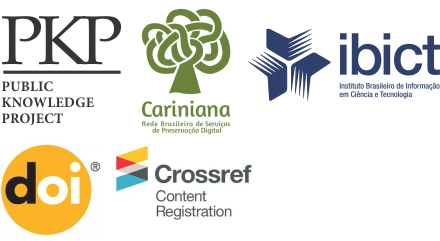Why we are our brains: challenging enactivism
Keywords:
Enactivism, Phenomenal Externalist Enactivism, Know-howAbstract
In this essay we will argue for the following theses: 1- know-how is not a form of practical knowledge devoid of propositional sense; 2- the relationship between each perception and the body itself is metaphysically contingent. 3- it is up to the brain to configure or to shape a physical body (Körper) into a living body (Leib) and not the other way around; 4- phenomenal externalism of enactivist nature, even in its mild form, is empirically implausible: the correlation between the conscious character of sensory experience with spatiotemporal neuronal patterns is much more systematic and regular than with anything outside the brain. But in its radical form is entirely implausible and contra-intuitive: phenomenal duplicates are not necessarily duplicates of agency; in short, 5-we are our own brain that has a body, avatars, and artifacts, properly configured and molded by the brain, and not a body that has a brain among other essential organs.
Downloads
References
BLOCK, N. Behaviorism revisited. Behavioral and Brain Sciences, v. 24, n. 5, p. 977-978, 2001.
BLOCK, N. Review of Alva Nöe, Action in Perception. Journal of Philosophy, v. 102, p. 259-272, 2005.
BLOCK, N. Arguments Pro and Con on Adam Pautz’s External Directedness Principle. In: PAUTZ, A.; STOLJAR, D. (ed.). Blockheads! Cambridge: MIT Press, 2019.
BURGE, T. The Origins of Objectivity. Oxford: Oxford University Press, 2010.
COSMELLI, D.; THOMPSON, E. Embodiment or Envattment? Reflections on the bodily basis of consciousness. In: STEWART, J. et al. (org.). Enaction: Toward a New Paradigm for Cognitive Science. Cambridge, MA: MIT Press, 2010.
CHAN, B. L.; WITT, R.; CHARROW, A. P.; MAGEE, A.; HOWARD, R.; PASQUINA, P. F.; HEILMAN, K. M.; TSAO, J. W. Mirror therapy for phantom limb pain. N Engl J Med, v. 357, n. 21, p. 2206-2207, 2007.
COWART, B. J.; RAWSON, N. E. Olfaction. In: GOLDSTEIN, E. (ed.). The Blackwell Handbook of Perception. Oxford: Blackwell, 2001.
DEHAENE, S. Consciousness and the Brain: Deciphering How the Brain Codes Our Thoughts. New York: Viking, 2014.
DI PAOLO, E. A. Extended life. Topoi, v. 28, p. 9-21, 2010/2014.
DRETSKE, D. Experience as Representation. Philosophical Issues, v. 13, p. 67-82, 2003.
FFYTCHE, D. H. The Hallucinating Brain: Neurobiological Insights into the Nature of Hallucination. In: MACPHERSON, F.; PLATCHIAS, D. (org.). Hallucination: Philosophy and Psychology. Cambridge, MA: MIT Press, 2013.
FODOR, J. A. The Language of Thought. New York: Thomas Y. Crowell, 1975.
FODOR, J. A. The Modularity of Mind. Cambridge, MA: MIT Press, 1983.
GALLAGHER, S. How the Body Shapes the Mind. Oxford: Oxford University Press, 2005.
GALLAGHER, S.; BOWER, M. Making Enactivism even more Embodied. Avant, v. 5, p. 232-247, 2014.
GIBSON, J. J. The Ecological Approach to Visual Perception. Hillsdale, NJ: Lawrence Erlbaum Associates, 1986.
HARDIN, C. L. Color for Philosophers: Unweaving the Rainbow. Indianapolis: Hackett, 1988.
HOWARD, J. D. et al. Odor Quality Coding and Categorization in Human Posterior Piriform Cortex. Nature Neuroscience, v. 12, p. 932-939, 2009.
HUTTO, D.; MYIN, E. Radicalizing Enactivism: Basic Minds without Content. Cambridge, MA: MIT Press, 2013.
HUTTO, D.; MYIN, E. Evolving Enactivism: Basic Minds Meet Content. Cambridge, MA, USA: MIT Press, 2017.
JACOB, P. Why visual experience is likely to resist being enacted, Psyche: An Interdisciplinary Journal of Research On Consciousness, v. 12, p. 1-12, 2006.
LEE, G. The Search for the Inner Light: Explanation and Objectivity in the Study of Consciousness. [Manuscript], 2020.
MERLEAU-PONTY, M. Phénoménologie de la perception. Paris: Gallimard, 1945.
NOË, A. Action in Perception. Cambridge, MA: MIT Press, 2004.
NOË, A. Real Presence. Philosophical Topics, v. 33, p. 235-264, 2005.
O’REGAN, J. K.; NOË, A. A sensorimotor account of vision and visual consciousness. Behavioral and Brain Sciences, v. 24, p. 939-1031, 2001.
PAIS-VIEIRA, M. et al. A Brain-to-Brain Interface for Real-Time Sharing of Sensorimotor Information. Scientific Reports, v. 3, 2013.
PAPINEAU, D. Sensory Experience and Representational Properties. Proceedings of the Aristotelian Society, v. 114, p. 1-33, 2014.
PAUTZ, A. Perception. London/New York: Routledge, 2021.
PENFIELD, W.; E PEROT, P. The Brain’s Record of Auditory and Visual experience: A Final Summary and Discussion. Brain, v. 86, p. 595-696, 1963.
PEREIRA DE SÁ, R. H. The Naturalizing Program of Perceptions Defended. Grazer Philosophische Studien, p.1-9, 2021.
PLESSNER, H. Untersuchungen zu einer Kritik der philosophischen Urteilskraft. In: Gesammelte Schriften II: Frühere philosophische Schriften. Frankfurt am Main: Suhrkamp, 1981. p. 7-321.
POLGER, T. Natural Minds. Cambridge, MA: MIT Press, 2004.
PRINZ, J. J Putting the brakes on enactive perception. Psyche: An Interdisciplinary Journal of Research on Consciousness, v. 12, 2006.
PUTNAM, H.; JACOBSON, H. The Needlessness of Adverbialism, Attrib- uteism and Its Compatibilty With Cognitive Science. Philosophia, v. 42, p. 555-570, 2014.
RAMAKRISHNAN, A. Computing Arm Movements with a Monkey Brainet. Scientific Reports, v. 5, 2015.
SHOKUR, S. et al. Expanding the body schema in sensorimotor cortex by virtual touches of an avatar. Proceedings of the National Academy of Sciences, p. 1-6, 2013.
STANLEY, J. E.; WILLIAMSON, T. Knowing How. The Journal of Philosophy, v. 98, n.8, p. 411-444, 2001.
THOMPSON, E. Mind in Life: Biology, Phenomenology, and the Sciences of Mind. Cambridge, MA: Harvard University Press, 2007.
THOMPSON, E.; VARELA. Radical embodiment: Neural dynamics and consciousness. Trends in Cognitive Sciences, v. 5, n. 418-425, 2001.
TONONI, G.; KOCK, K. Consciousness: Here, There and Everywhere. Philosophical Transaction of the Royal Society, v. 370, p. 1-18, 2015.
TYE, M. Ten Problems of Consciousness. Cambridge: MIT Press, 1995.
VARELA, F. J.; THOMPSON, E.; ROSCH, E. The Embodied Mind: Cognitive Science and Human Experience. Cambridge, MA: MIT Press, 1991.
WITTGENSTEIN, L. Philosophische Untersuchungen. Kritisch-genetische Edition. Herausgegeben von Joachim Schulte. Wissenschaftliche Buchgesellschaft. Frankfurt am Main: Suhrkamp, 2001.
Recebido: 12/09/2022
Aceito: 16/01/2023
Downloads
Published
How to Cite
Issue
Section
License
Copyright (c) 2023 TRANS/FORM/AÇÃO: Revista de Filosofia

This work is licensed under a Creative Commons Attribution 4.0 International License.
This is an article published in open access under a Creative Commons license
.







